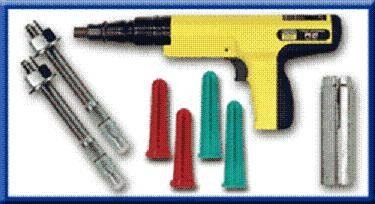
Introduction

Wall anchors are handy devices to use when you've got something to hang on a wall but no support for it in or behind the wall. A mirror or large painting needs a hanger on a solid surface or a stud-backed wall to hang securely. Unfortunately, most of today's construction uses drywall or cement board for interior walls, so the brads and nails used with hangers won't "grab" but will tear through the material. Wall anchors solve this problem using simple vector engineering to spread the downward pull of the hanging object in multiple directions or by using the wall itself to distribute the weight of the pull. Wall anchors come in a variety of materials and designs. Choosing the right type and strength of wall anchor is important to securely hang your heavy object. Packaged anchors generally come with instructions for use---or ask for assistance to choose the right anchor.
Common Household Anchors
Video of the Day
Expansion anchors are the kind of anchor most of us use to hang curtain rods, towel bars or heavy pictures in drywall. The most common expansion anchors are simple plastic or metal cylinders, ridged inside and out. Perforations down the side of the anchor open as a screw is put in, expanding the ridged outside to grip wallboard or plaster. Threaded drywall anchors or toggles are heavy-duty anchors, used for very heavy mirrors or an application where the weight does not hang straight down, like a grab bar in a bathroom. These anchors may be plastic but the most heavy-duty ones are metal, fashioned like a large, wide wood screw or cylinder with a "wing" that flips out as the screw is inserted. Several light-duty anchors can be used to replace one heavy duty anchor if the weight has a simple downward pull but the heavier types should be used for heavy drapes or any valuable heavy pieces. Plastic wall anchors should not be used to hang anything heavier than a smoke alarm from a ceiling: the downward force will bend the plastic and the screw will eventually be pulled out. If expansion anchors can't be removed by unscrewing them or jiggling to loosen them, they can be tamped in with a nail set and spackled for painting.
Video of the Day
Special Types of Anchors
Hollow-wall anchors, the metal anchors called "molly-bolts" and "toggle bolts," distribute weight behind the wall using flanges that spread or flip out when the screw is tightened. Molly bolts are perforated sleeves that are inserted into a pre-drilled hole and then pulled tight by screwing a machine screw into the hole. Molly bolts also work well in concrete and can be removed and spackled using the same method as an expansion anchor. Toggle bolts are winged affairs that flip open behind the wall and are pulled to lie flat on the back of the wall. Toggle bolts are generally recommended for ceiling hangings. When they need to be removed, simply unscrew the bolt and the wings will fall down behind the wall. Then patch or spackle the hole.